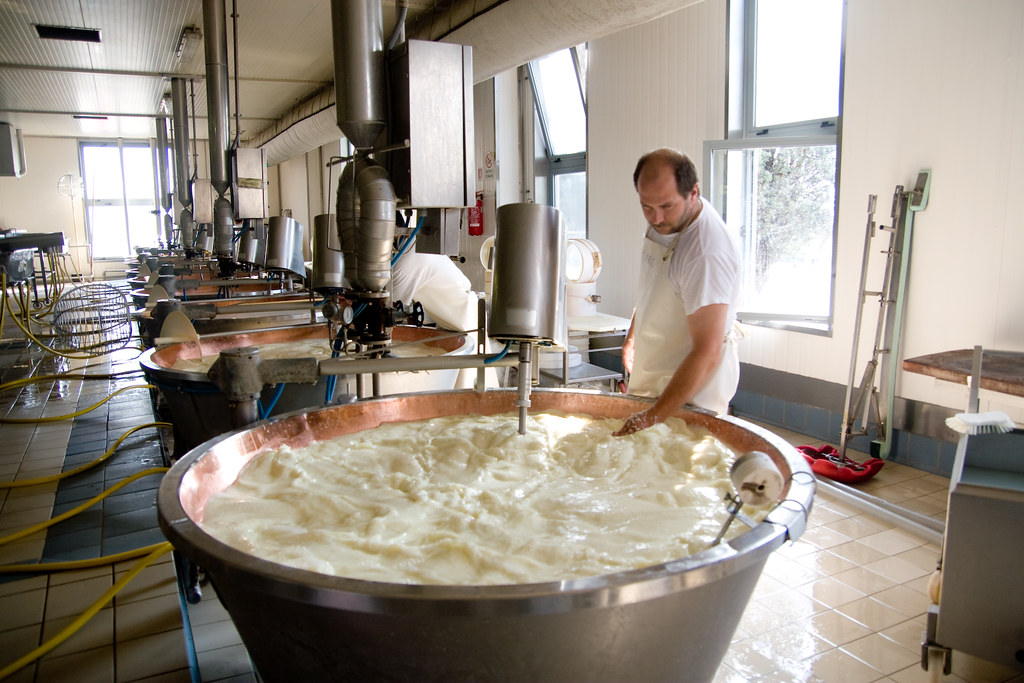Learn the Art of Floridia Cheese: A Guide to Cheese Makers Melbourne
Learn the Art of Floridia Cheese: A Guide to Cheese Makers Melbourne
Blog Article
Unlocking the Tricks of Artisanal Cheese Making: A Detailed DIY Guide
In the realm of cooking craftsmanship, artisanal cheese making stands as a testament to the delicate balance in between practice and development. Each action in the process, from selecting the ideal milk to perfecting aging strategies, holds within it a wealth of understanding gave with generations. As we start this trip to demystify the art of developing charming cheeses, we are faced with a tapestry of secrets and abilities waiting to be deciphered. Join us as we explore the details of this ancient craft, where art, scientific research, and patience assemble to create tastes that tantalize the senses.
Selecting the Right Milk
When beginning on the journey of artisanal cheese making, the option of milk plays a vital role in figuring out the top quality and qualities of the last product. The type of milk chosen influences the flavor, texture, and on the whole account of the cheese.
Additionally, the resource of the milk, whether from cows, goats, sheep, or buffalo, adds distinct tastes and features to the cheese. Each type of milk brings its very own nuances, enabling for a broad array of cheese varieties to be crafted based on the picked milk.
Culturing and Coagulating
To start the cheese-making process, the important actions of culturing and coagulating should be very carefully implemented to transform milk into curds and whey. Culturing includes presenting useful microorganisms to the milk, which then starts the fermentation process. These germs transform lactose (milk sugar) into lactic acid, producing the acidic environment necessary for coagulation. The kind of culture utilized can dramatically impact the taste, appearance, and ripening of the last cheese item.

The timing and temperature level control throughout culturing and coagulation are crucial factors that influence the last result of the cheese. Proper implementation of these steps is vital to ensure the desired texture, flavor, and consistency of the artisanal cheese being produced.
Draining Pipes and Pressing Curds
After the milk healthy proteins have actually coagulated and the curds have been reduced to release whey, the following vital step in artisanal cheese making entails draining pipes and pushing the curds to accomplish the preferred appearance and consistency of the final cheese item. Draining pipes is the procedure of separating the curds from the whey. This can be done by transferring the curds into a cheesecloth-lined colander or mold and mildew and enabling the whey to drain pipes off naturally. The moment for draining can vary relying on the sort of cheese being made and the wanted wetness web content.
Pushing aids expel any type of continuing to be whey and compacts the curds to create a strong cheese wheel. Appropriate pressing and draining are essential actions that substantially affect the quality and features of the artisanal cheese being created.
Aging and Flavor Strategies
Executing careful aging and flavor strategies is pivotal in improving the deepness and intricacy of artisanal cheeses, boosting their taste accounts his response to splendid levels of improvement and refinement. Aging plays a critical role in establishing the unique tastes and textures that distinguish artisanal cheeses.
Flavoring methods likewise contribute significantly to the final preference of artisanal cheeses. Cheesemakers might choose to introduce extra flavors by including components such as herbs, spices, and even fruits right into the cheese throughout the production procedure. Additionally, some cheeses are cleaned or rubbed with numerous fluids, such as brine or alcohol, to improve their structures and tastes.
Covering and Keeping Cheeses

Verdict
In final Continue thought, grasping the art of artisanal cheese making includes carefully choosing the best milk, complying with specific culturing and coagulating processes, draining pipes and pressing curds efficiently, and making use of different aging and flavoring techniques. Remember to wrap and save your cheeses correctly to guarantee optimum flavor and texture growth.
Each type of milk brings its very own subtleties, enabling for a wide range of cheese varieties to be crafted based on the selected milk.After the milk healthy proteins have coagulated and the curds have actually been cut to release whey, the next vital action in artisanal cheese making involves draining pipes and pushing the curds to accomplish the wanted texture and uniformity of the final cheese product. Most cheeses should be covered in wax paper or cheese paper to enable them to take a breath while shielding them from drying out. For cheeses that require to continue aging, such as bloomy skins or washed rinds, ensure they are kept in an amazing atmosphere like a cheese cave or a fridge set to the ideal temperature level. By paying focus to the wrapping and storage of artisanal cheeses, cheese manufacturers and fanatics can preserve the honesty of these specials and totally enjoy description their complex flavors.
Report this page